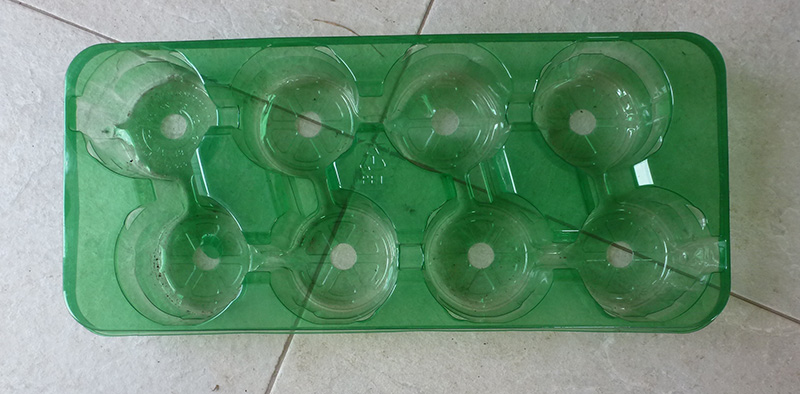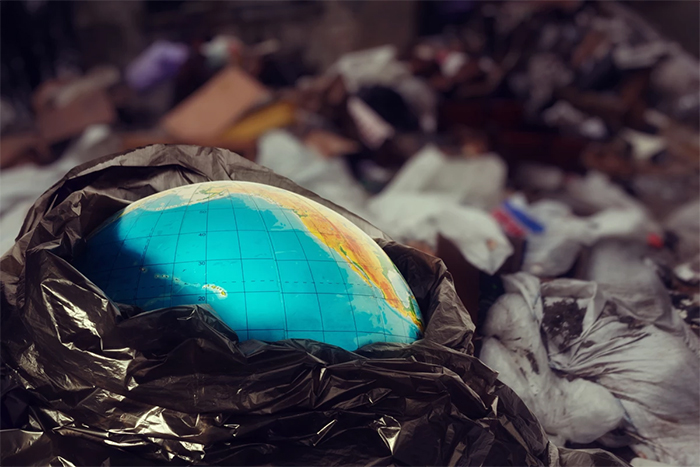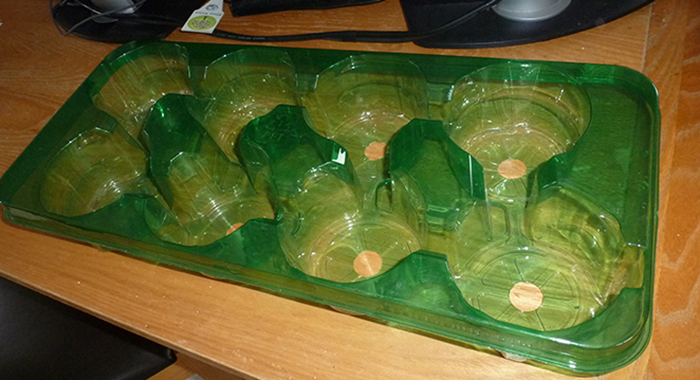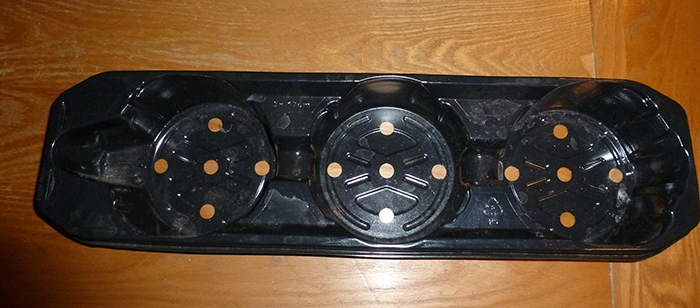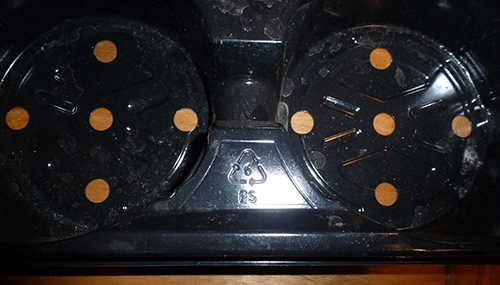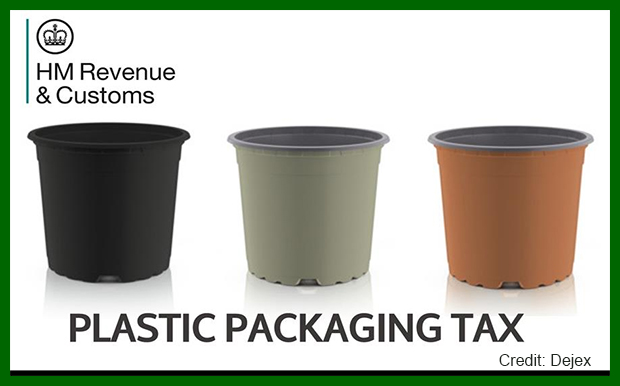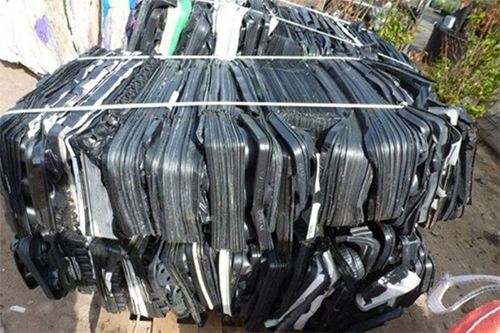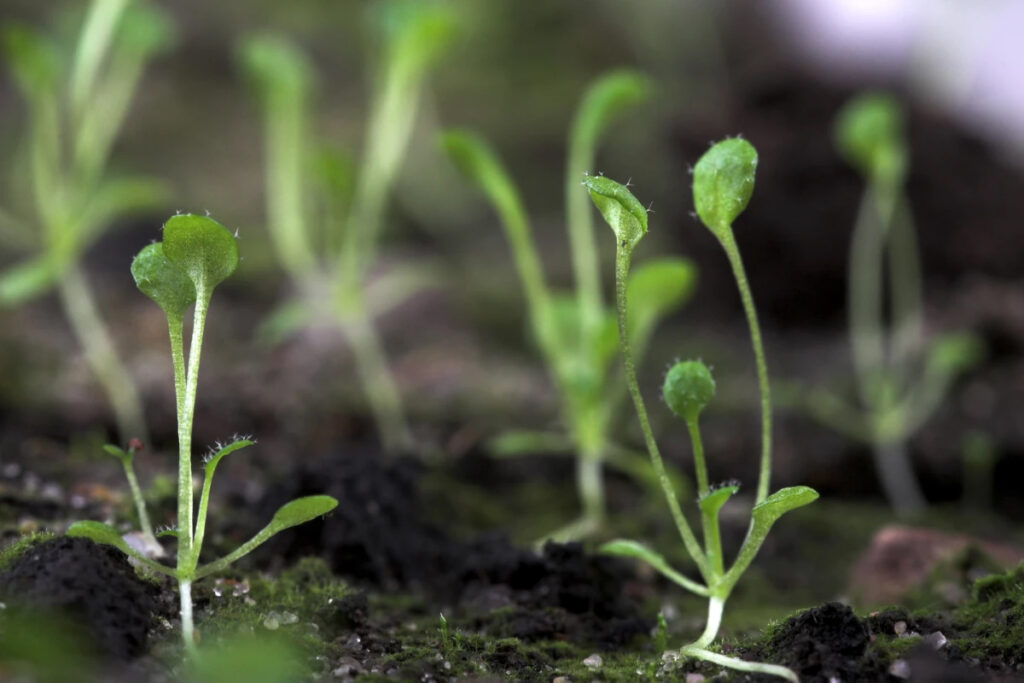
Above Plastic heading for landfil.
What the Plastic Industry keeps hidden behind “recycling”
United Nations Declaration
The truth in simple terms for Horticulture
Below are various notes and information collected by us
16June 2023
Make no mistake – the fossil fuel industry will fight the end of plastic
At least a fifth of plastic packaging could be replaced by reusable or refills– but the oil companies and big food and drink multinationals will do their best to persuade you otherwise, writes Jonathon Porritt.
On Friday 2 June, in Paris, 170 nations signed up to an agreement to draft a Global Plastics Treaty by the end of 2024. This is a positive step on our journey to tackle plastic pollution.
But don’t hold your breath. The meaningful nature of the treaty is under threat. The fossil fuel and petrochemical industries were all over the conference in Paris, doing everything they could to slow things down and talk up the benefits of doing things voluntarily. At least we are forewarned this time round, given how well that playbook has worked for them in undermining 30 years of climate negotiations. And forewarned is forearmed.
Part of what this industry is pushing for is simply more recycling. The fact that something is theoretically ‘recyclable’ though does not mean it gets recycled. In fact, less than nine per cent of plastic waste globally has been recycled. And when it is, that can cause even more problems as it can increase the toxicity of plastic, on account of the thousands of chemicals being used in plastic manufacturing today.
Then there is mechanical recycling (when plastic waste is chopped up into tiny pieces to be reconstituted into new plastic products) where at least 10 per cent of the volume is released as microplastics. Microplastics and nanoplastics get literally everywhere. Not only have they been found in ice-cores in the Artic and Antarctic, on top of the highest mountains and at the bottom of the deepest oceans, recent studies have found them in our blood, our brains, our lungs, in mothers’ milk and even passing to unborn children through the placenta.
Recycling also can perpetuate the core problem – namely, the excessive and unnecessary use of plastics in society, particularly in packaging. We don’t however need to demonise all plastics in society – or indeed all plastic recycling. As City to Sea, the organisation behind World Refill Day points out, we need to approach things very differently: firstly, by setting an absolute cap and reduction mechanism on virgin plastic production and then by scaling up reusable packaging.
According to the Ellen MacArthur Foundation, reusable packaging models enable brands to build customer loyalty, optimise business operations, allow for product customisation, and still cut costs. It’s estimated that at least 20 per cent of plastic packaging could be replaced by reusable systems and this represent a massive $10 billion business opportunity. Despite this, reusable packaging represents less than two per cent of packaging on the market.
These alternatives work for business and most importantly for the planet. But they’re a nightmare for the fossil fuel and chemical companies that make such vast profits out of promoting single-use plastics. As demand for oil begins to contract, and with an accelerating transition to Electric Vehicles and renewable energy, their dependence on plastics becomes ever more important to them. But they can now no longer deny the horrendous impact of their products on the environment and on the human body.
We must expect the ‘Predatory Delayers’ Playbook’ to be more and more in evidence over the next 18 months: seeking to slow the process down; massively exaggerating the costs and complexity of a shift to reusables; and using their political and financial firepower to focus on the false solutions rather than the system-transforming solutions now so urgently needed.
And this in turn will be a real test for the Fast Moving Consumer Goods companies, like Coca Cola, Nestle and Mars, which have benefited hugely from the undoubted convenience and low cost of plastic packaging.
They too will need to position themselves unambiguously on the right side of history as citizens the world over become more and more vocal, and effective, through action days like World Refill Day – in holding them to account.
Jonathon Porritt for Wicked Leeks
24 October 2022
Plastic recycling labeled “a myth” as US rates sink to 5%
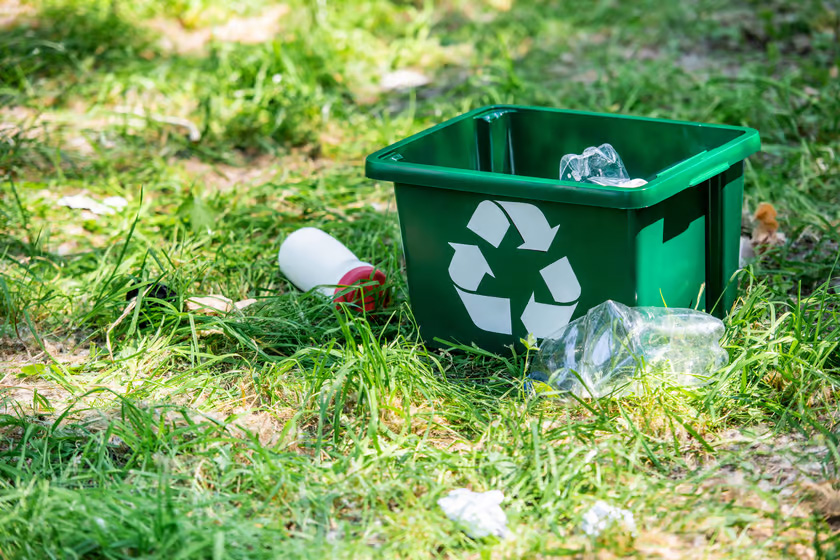
Recycling plastics is far from a straightforward process, but a new report has laid bare the grim reality of the situation. Conducted by Greenpeace, the study looked at activity at a broad range of processing facilities across the US and found that the vast majority of plastic waste generated by households wound up in landfill, with only around 5% actually recycled.
Called “Circular Claims Fall Flat Again,” the report released today is a follow-up to another carried out by Greenpeace that surveyed plastic recycling rates in the US. That 2020 report looked at the types of plastic accepted at around 370 recycling plants around the US, and found only some common plastics can legitimately be recycled, and that many may be collected as recycling from the curb but are sent to landfill or incinerated instead.
The new report again highlights the challenges in recycling plastic waste, which US households generated around 51 million tons of in 2021. The report points to the difficulty in collecting it all in the first place, correctly sorting the different types of it for recycling, and then the lackluster market for the recycled plastic products the process is able to produce.
These factors combine to make recycling a largely inconsequential course of action when it comes to reducing plastic waste, according to Greenpeace. It puts the recycling rate in the US at 9.5% in 2014, declining gradually to 8.7% in 2018, and to a new low of 5-6% percent in 2021. Of the estimated 51 million tons of waste generated by US homes last year, only 2.4 million tons was recycled.
“Single-use plastics are like trillions of pieces of confetti spewed from retail and fast food stores to over 330 million US residents across more than 3 million square miles each year,” said Lisa Ramsden, Greenpeace USA Senior Plastics Campaigner. “It’s simply not possible to collect the vast quantity of these small pieces of plastic sold to US consumers annually. More plastic is being produced, and an even smaller percentage of it is being recycled. The crisis just gets worse and worse, and, without drastic change, will continue to worsen as the industry plans to triple plastic production by 2050.”
As plastic waste continues to pollute the environment and scientists continue to uncover the extent of the disaster, many experts see tackling the problem at the source as the ideal approach. While bioplastics that degrade safely continue to show promise, reusable alternatives appear the best course of action. Describing the concept of plastics recycling as “a myth,” Greenpeace holds a similar view.
“Corporations like Coca-Cola, PepsiCo, Nestlé, and Unilever have worked with industry front groups to promote plastic recycling as the solution to plastic waste for decades,” said Ramsden. “But the data is clear: practically speaking, most plastic is just not recyclable. The real solution is to switch to systems of reuse and refill.”
The full report can be found online here (PDF).
Source: Greenpeace
For full Greenpeace Report click the More Information button.
25 March 2022
Plastic particles found in the human bloodstream for the first time

Scientists are continuing to uncover the true extent of our plastic pollution problem, and increasingly we are seeing an emphasis placed on its potential effects on the human body. The latest development in this area comes from scientists in the Netherlands who have used novel analytical tools to produce the first evidence of plastic particles being absorbed into the bloodstream.
When plastic waste like bags and bottles enter the environment, natural forces like ocean currents, wind and UV light cause them to break down into smaller fragments called microplastics. And these are incredibly troublesome, both because they make it hard for scientists to track their path through the environment and because they can be taken up by living organisms.
We’ve seen the detrimental impacts on marine creatures, with microplastics found to cause aneurysms in fish and cognitive impairment in hermit crabs. We also now know that they make their way into the human body, with studies on human tissue and stool finding plastic particles in every sample.
The research team behind this new study sought to build on this by investigating the potential presence of plastics in human blood. To do so, the scientists came up with a novel method involving the use of mass spectrometry to inspect human blood for tiny plastic particles.
We have now proven that our bloodstream, our river of life as it were, has plastic in it
This technique was applied to samples from 22 healthy donors with the scientists on the lookout for five different polymers that are considered the building blocks of plastic. Three quarters of the subjects were found to have plastic particles in the blood, serving as the first evidence that the material can end up in the human bloodstream. The average concentration was 1.6 micrograms per milliliter, around a teaspoon of plastic to every 1,000 liters of water.
“We have now proven that our bloodstream, our river of life as it were, has plastic in it,” said Heather Leslie from Vrije Universiteit Amsterdam.
Polyethylene terephthalate (PET), polyethylene, and polymers of styrene were the most common forms of plastic to turn up in the samples. The plastic’s route to the bloodstream is “likely to be via mucosal contact (either ingestion or inhalation),” the researchers write in their paper, noting that airborne particles between 1 nanometer and 20 micrometers are considered respirable.
So how does this impact human health? Studies have demonstrated plastic particles can have toxic effects on cells and alter their shape. Mouse studies also suggest they might infiltrate the blood brain barrier and contribute to high cholesterol and heart disease. But there is still much to learn about the dangers of plastic particle absorption, with the authors of this new study looking to investigate how these particles might move from the blood into tissues and organs as their next step.
“This dataset is the first of its kind and must be expanded to gain insight into how widespread plastic pollution is in the bodies of humans, and how harmful that may be,” said study author Marja Lamoree. “With this insight we can determine whether exposure to plastic particles poses a threat to public health.”
The research was published in the journal Environment International.

4 March 2022
UN endorses historic global resolution to “End Plastic Pollution”
The UN has signed a historic agreement to address the full lifecycle of plastics, with the goal of preventing their ongoing pollution of the planet
The more we learn about the magnitude of plastic pollution contaminating the planet’s rivers, oceans, and even its mountaintops, the more pressing the need becomes for wide-ranging and coordinated action. In what is being hailed as a historic day, global leaders at the UN Environmental Assembly have endorsed a first-of-a-kind resolution that addresses the full lifecycle of the material to reduce its growing impacts on the natural world.
In 1950, there was around two million metric tonnes of plastic produced globally. By 2017, this had ballooned to 348 million metric tonnes, much of which is designed for single use and improperly disposed of, subsequently making its way into the environment where it has largely untold impacts on living organisms.
While we have much to learn about plastic in this regards, scientists are starting to make alarming discoveries around the dangers it poses to humans, animals and even plants. Through research published in recent years, we know that plastic particles can alter the shape of lung cells amid broader, toxic effects on human cells, cause reproductive changes in fish and infiltrate the blood brain barrier in mice.
Rather than highlight cleanup solutions or present ways to prevent these harmful effects on living organisms, experts in the field regularly point to the need to address the problem at the source as the best course of action. This means working towards things like circular economies for plastic and the development and use of alternative materials.
Called “End Plastic Pollution,” the resolution signed by global leaders from 175 nations at the UN Environment Assembly today works towards these sorts of objectives. Work will begin this year on drafting a legally binging agreement for 2024 that is expected to address the full lifecycle of plastic, including its production, design and disposal. This means investigating alternatives, and the design of reusable and recyclable products and materials.
“Today marks a triumph by planet earth over single-use plastics,” said Inger Andersen, Executive Director of UN Environmental Programme. “This is the most significant environmental multilateral deal since the Paris accord. It is an insurance policy for this generation and future ones, so they may live with plastic and not be doomed by it.”
Source: UN Environmental Programme

2 March 2022
Today i found 2 trays in my local Garden Centre and Supermarket
1 PET1: Polyethylene Terephthalate marked with a 1 on the triangle. Very commonly recycled, can break down when exposed for long periods of time to light or heat.
It’s the stuff drinks bottles are made of and it breaks down too easily to withstand sunshine and weather.
6 PS: Polystyrene One of the most widely used types of plastic, but one of the most harmful to the environment as it breaks down very quickly into very small particles, and tends not to last very long.
Use in gardens: bedding plant trays, pots, labels and packaging for mail order plants
Comment
These are 2 very different materials and need to be sorted to be recycled. Can anyone tell me how in a garden centre and supermarket with lots of different trays from God knows how many different manufacturers? Also because they are plant trays they are likely to be contaminated by soil etc so who is going to clean them? If you read the description they both should NOT be used in an horticultural environment because they break down in sunlight quickly. They will end up in the environment ( read further down 20th June 2020) or in landfill. The horticultural industry needs to get up and do something. We cannot sit back and do nothing, it will be forced upon us by the public and by supermarkets and the industry will have bear the costs once again in an unthought out rush to please the supermarkets and the public.

24 February 2022
Horticulture Week
No need to panic on plastic tax, says Dejex
“First of all, don’t panic”, packaging supplier Dejex tells the horticulture industry.
Supplier Dejex said: “First of all, don’t panic; most customers will be relatively unaffected by the changes. The Plastic Packaging Tax (PPT) will encourage less plastic packaging and where plastic is the best option to encourage a higher recycled content. There will be a charge of £200 per tonne on all plant pots, trays or bedding packs that contain less than 30% recycled content.
“Luckily nearly all horticultural packaging has contained extremely high recycled content for many decades. Nearly all our standard pots in black, terracotta and taupe have over 85% recycled content and most of our grey trays are similar. There will be some brightly coloured pots that may need high percentages of virgin material to create the colour.
“Even with this in mind the only people who have to report and pay the PPT are either the manufacturer of the packaging if they are UK based, or the importer of the product if manufactured abroad. As an importer Dejex will have done all the reporting and paid the PPT on any products purchased from us; as a Dejex customer you have to do nothing. You need no certificates, no data, our invoices will just contain a statement ‘Plastic Packaging Tax paid on this item’.”
In summary:
• Reporting for PPT will be quarterly with data collection starting 1 April 2022 and the first submission in July 2022.
• You will be legally required to report plant pots, trays or bedding packs you directly import.
• You will only pay PPT on plant pots, trays or bedding packs you directly import and have less than 30% recycled content.
25 February 2022
Comment
I am commenting on the above and drawing Growers to the problem of plastic.
Why is there a plastic Tax?
Because it is actually an environment tax because plastic is damaging the world we live in.
So we should call it an environment damaging tax.
All this talk of recycling is rubbish. Only 40% of plastic is recycled in the EU and lets face it is a flower pot clean enough for it to be destined for recycling?
Therefore I challenge growers to actually prove to me that their local authority recycles their horticultural plastic. Also do their customers recycle their plastic pots having cleaned them and sorted them out into their correct plastic category.
Growers do not want to be in the situation as we are in with peat-free compost with every Tom Dick and Harry jumping at one aspect of Horticulture and forcing to industry to accept a solution that has not been fully researched.
David Darrell
Merlin Growers

10th Feburary 2022
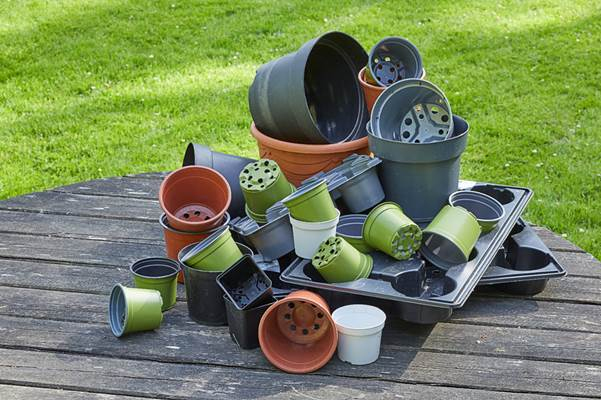
British Protected Ornamentals Association hear plastic pot dilemma
Horticulture Week 9 February 2022,
The recent British Protected Ornamentals Association technical conference heard Desch Plantpak’s Phil Griffiths talk about how plastic remains the best product for plant pots despite concerns about plastic and sustainability.
Griffiths said the thin wall plastic product still offers the best solution, but only in the situation “where we can recycle all this plastic waste”.
He said paper pulp fibre compostable and recyclable cardboard pots (such as D Grade fibre) are 0.5% of the 400m pot European market. He said the product needs a lot of water to use it and said trials with a big supermarket were scrapped based on the CO2 footprint of pulp fibre products.
He added that price and availability concerns surround bio and fibre products, which can be x3 the price of plastic.
He said councils are still not accepting plastic garden waste – Horticulture Week research found 87% of councils don’t recycle them from the kerbside. Desch would like to keep all trays in the industry in a closed loop and not send them to the consumer.
He said Desch don’t yet see a holy grail for sustainability – a Desch pot made from green waste was 10x weight and 20x the price, only a low amount on pallets could be loaded, and it disintegrates in six weeks.
The plan is to react quickly to market trends, such as changing to rPET, but the company does not make that themselves and have to import it.
An “explosion” is price for recycled material has followed the pandemic. Growers are reluctant to pass on higher prices to retailers as they have already agreed prices. But there are “no buyers that aren’t aware that prices are rising” and “season contract prices need to be put on hold or else growers won’t survive”.
He added: “We’re often seen as a soft touch by retailers. They won’t get rid of Heinz Baked Beans but can kick the little grower out.
Big growers need big retailers but big retailers have to do a lot of work to replace big growers with a lot of little growers.”
19th Feburary 2022
Reply by David Darrell of Merlin Growers
I read with interest the report in Horticulture Week 9 February 2022 BPOA hear plastic pot dilemma about a talk to the British Protected Ornamentals Association by Desch Plantpak’s Phil Griffiths.
Plantpak have a vested interest in plastic pot production so the fact that “plastic remains the best product for plant pots” conclusion is obvious.
I am old enough to remember in “The Grower” the discussion about the fact that plastic was not as good for growing plants as clay. I would be interested to know how many growers in the UK still use clay on a commercial basis.
The essential point to me in his argument was “where we can recycle all this plastic waste”. It is not as can be seen by various studies. In the EU, for example Plastic: 40% is recycled, 30% is sent to landfill, and 30% is incinerated. Cardboard: 86% is recycled, 10% is sent to landfill, and 7% is incinerated.
The further argument that cardboard needs a lot of water to use it and trials with a big supermarket were scrapped based on the CO2 footprint of pulp fibre products. How can this be?
1kg of new cardboard requires approximately: 3kg of wood, 350 litres of water, between 7 and 14 kWh of electricity.
When using recycled materials, water consumption can be reduced by 50%, and energy use by 25%.
In landfill, cardboard takes between 2 and 12 months to decompose.
1kg of new plastic requires approximately: 2kg of petroleum, 180 litres of water, between 17 and 32kWh of electricity.
When using recycled materials, energy consumption can be reduced by up to 88%.
In landfill, plastic takes between 400 and 1,000 years to decompose.
Also anyone reading this know what the numbers inside the triangle on plastic products means?
He also said that changing to rPET would be a solution, however recycled PET is still PET (No 1 in the recycling triangle and my notes say “Polyethylene Terephthalate marked with a 1 on the triangle. Very commonly recycled, can break down when exposed for long periods of time to light or heat.” Not a suitable product for pots in glasshouse and external exposure I would have thought!
Desch also said they would like to keep all trays in the industry in a closed loop and not send them to the consumer, this is applaudable, but how? It would inevitably mean more labour cost for the transfer of pots into new trays and also if this was not carried out how would the pots be transported?
This is a complex issue and I certainly do not offer a solution, however, the industry needs to wake up to this issue quickly. Growers do not want to be in the situation as we are in with peat-free compost with every Tom Dick and Harry jumping at one aspect of Horticulture and forcing to industry to accept a solution that has not been fully researched. Yes I agree with the late Peter Seabrook about peat. The industry and companies involving pot manufacture or potential pot and tray manufacture need to wake up before the public forces an unacceptable solution on growers.
Further reading:
https://theecobahn.com/packaging/plastic-vs-cardboard-packaging-a-complex-choic
https://merlingrowers.co.uk/what-the-plastic-recycling-numbers-mean/
20th June 2020
Study shows nanoplastics can build up in plants and stunt their growth
By Nick Lavars, New Atlas
Such is the magnitude of our plastic pollution problem that tiny particles of the stuff continue to turn up in all kinds of unexpected places, from snowfall in the Arctic to the sea ice in the Antarctic. That tiny fragments also exist in the soil is perhaps not so surprising, but researchers have now conducted one of the first studies on what this means for plant life, finding that it can reduce the total biomass of the finished product.
The study was carried out by an international team of researchers from the University of Massachusetts Amherst and Shandong University in China, who set out to investigate how plastic pollution could be infiltrating the Earth’s soil and plant life, with a particular focus on agricultural settings.
While a plastic bag or soda bottle may make its way into the ocean or environment as a complete piece of trash, the weather and other corrosive forces can quickly break it down into smaller fragments that are difficult to track.
These microplastics measuring less than 5 mm (0.2 in) in size are a huge focal point for researchers of ocean plastics, but the authors of the new study turned their attention to even tinier fragments measuring less than 100 nanometers, described as nanoplastics. Along with changes to the physical size of these plastic pieces, the degradation process can also alter their chemical properties and even equip them with a surface charge.
“This is why we synthesized polystyrene nanoplastics with either positive or negative surface charges for use in our experiments,” says Baoshan Xing from the University of Massachusetts Amherst.
With these nanoplastic samples in hand, the team set up experiments where Arabidopsis thaliana, a small flowering plant, was used as a model. These plants were made to grow in soil with a variety of nanoparticles featuring different types of surface charges, with the team then observing how the different conditions impacted their weight, height, root growth, chlorophyll content and overall health over a period of seven weeks.
“Nanoplastics reduced the total biomass of model plants,” says Xing. “They were smaller and the roots were much shorter. If you reduce the biomass, it’s not good for the plant, yield is down and the nutritional value of crops may be compromised. We found that the positively charged particles were not taken up so much, but they are more harmful to the plant. We don’t know exactly why, but it’s likely that the positively charged nanoplastics interact more with water, nutrients and roots, and triggered different sets of gene expressions. That needs to be explored further in crop plants in the environment. Until then, we don’t know how it may affect crop yield and food crop safety.”
In another round of experiments, the team subjected seedlings to the microplastic-rich soil environment as a way of studying the effects on root sensitivity and found that after 10 days, the growth of the seedlings was again stunted compared to a control group.
“Our experiments have given us evidence of nanoplastics uptake and accumulation in plants in the laboratory at the tissue and molecular level using microscopic, molecular and genetic approaches. We have demonstrated this from root to shoot.”
The research was published in the journal Nature Nanotechnology.
Source: University of Massachusetts Amherst
To find Pots and other environmentally products click the picture below




